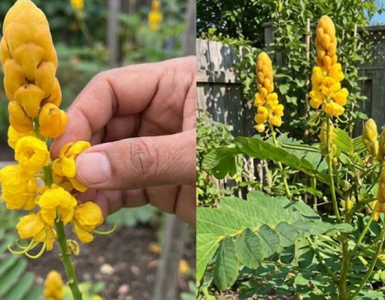Loquat trees (Eriobotrya japonica) are attractive, evergreen fruit trees that produce delicious, sweet-tart fruits. Native to China and widely cultivated in Japan, these trees are gaining popularity in other parts of the world due to their ornamental value and tasty fruits. Here’s a comprehensive guide on how to grow and care for loquat trees to enjoy their beauty and bounty in your garden.
Choosing the Right Location
Climate
Preferred Climate: Loquat trees thrive in subtropical and mild temperate climates. They are hardy in USDA zones 8-10.
Temperature: Ideal temperatures range between 45°F (7°C) and 85°F (29°C). They can tolerate brief periods of frost but may suffer damage if temperatures drop below 27°F (-3°C).
Sunlight
Light Requirements: Loquat trees prefer full sun but can tolerate partial shade. Ensure they receive at least 6-8 hours of direct sunlight daily for optimal growth and fruit production.
Soil
Soil Type: Loquats are adaptable to various soil types but prefer well-draining, slightly acidic to neutral soil (pH 5.5-7.0).
Soil Preparation: Amend heavy clay soils with organic matter to improve drainage and aeration.
Planting Loquat Trees
Selecting a Tree
Varieties: Choose a grafted loquat tree from a reputable nursery. Grafted trees produce fruit faster and are more disease-resistant than seed-grown trees.
Planting Time
Best Time to Plant: Plant loquat trees in spring or fall when the weather is mild.
Planting Steps
Digging the Hole: Dig a hole twice as wide and as deep as the root ball.
Positioning the Tree: Place the tree in the hole, ensuring the top of the root ball is level with the surrounding soil.
Backfilling: Fill the hole with soil, gently firming it around the roots to eliminate air pockets.
Watering: Water the tree thoroughly after planting to help settle the soil and establish the roots.
Watering and Fertilizing
Watering
Frequency: Water young loquat trees regularly to keep the soil consistently moist but not waterlogged. Mature trees are more drought-tolerant but still benefit from regular watering, especially during dry periods.
Method: Use a soaker hose or drip irrigation to deliver water directly to the root zone.
Fertilizing
Schedule: Fertilize loquat trees in early spring and again in late summer.
Type: Use a balanced, slow-release fertilizer (10-10-10) or an organic alternative.
Application: Apply fertilizer according to the manufacturer’s instructions, spreading it evenly around the tree’s drip line and watering it in well.
Pruning and Maintenance
Pruning
When to Prune: Prune loquat trees in late winter or early spring before new growth begins.
How to Prune: Remove dead, damaged, or diseased branches. Thin out crowded branches to improve air circulation and light penetration. Shape the tree to maintain a desirable form and size.
Mulching
Benefits: Mulch helps retain soil moisture, suppress weeds, and regulate soil temperature.
Application: Apply a 2-3 inch layer of organic mulch (such as wood chips or straw) around the base of the tree, keeping it a few inches away from the trunk.
Pest and Disease Management
Common Pests
Pests: Loquat trees can be affected by pests such as aphids, scale insects, and fruit flies.
Control Methods: Use insecticidal soap or neem oil to manage pests. Encourage beneficial insects like ladybugs and predatory wasps to help control pest populations.
Common Diseases
Diseases: Loquats are susceptible to fungal diseases like fire blight, powdery mildew, and leaf spot.
Prevention and Treatment: Practice good sanitation by removing fallen leaves and fruit. Apply appropriate fungicides if necessary and ensure proper spacing and pruning to improve air circulation.
Harvesting and Storing Loquats
Harvesting
When to Harvest: Loquats typically ripen in late spring to early summer. The fruit is ready to harvest when it is fully colored (yellow, orange, or red, depending on the variety) and slightly soft to the touch.
How to Harvest: Gently twist or cut the fruit from the tree, taking care not to damage the fruit or the tree.
Storing
Fresh Storage: Loquats can be stored in the refrigerator for up to a week.
Preservation: Loquats can be preserved by canning, making jams or jellies, or drying the fruit.
Growing loquat trees can be a rewarding experience, offering both ornamental beauty and delicious fruit. By providing the right conditions and care, you can enjoy a healthy, productive loquat tree in your garden. Follow these guidelines to ensure your loquat tree thrives and produces bountiful harvests for years to come.






Add comment